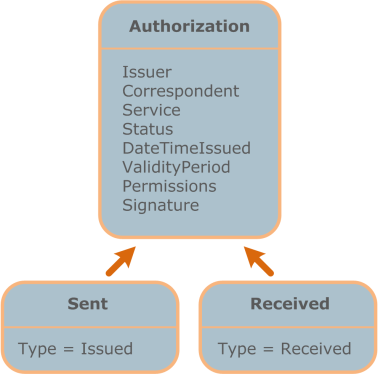
Relationship Management Application (RMA) is a service provided by SWIFT to help manage the business relationships between financial institutions. SWIFTNet 7.0 enables RMA capabilities for services based on InterAct and FileAct.
RMA consists of two main functions:
RMA uses a SWIFTNet InterAct Store and Forward service to exchange the permission data between financial institutions.
RMA usage is defined per service. The rules regarding its use are specified in the Application Service Profile (ASP), associated with each service.
RMA provides a SWIFT user with more control over the sending or receipt of messages in a many-to-many InterAct or FileAct service:
As of SWIFTNet 7.0, service parameters, including those for RMA, are defined in the relevant Application Service Profile (ASP).
Service Administrators define the parameters of their service. Each Service Administrator must provide service participants with the information they need to correctly use the service in question, including RMA-related information.
SWIFT keeps track of all service parameter and makes them available to all participants in a downloadable ASP package.
Within the context of FIN and SWIFTNet services, RMA standardizes:
Note: You do not have to renew an RMA authorization as long as the business relationship with your correspondent does not change.
The following figure shows the data model of an RMA authorization.

In this figure:
When RMA is mandatory for a service, meaning when authorizations are exchanged, the initiator of the authorization exchange is always the receiver of the flow to authorize.
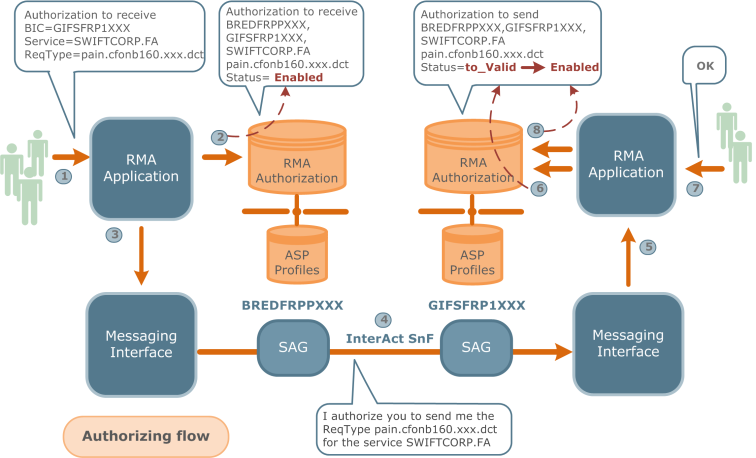
Steps in the authorization flow:
| Step | Description |
|---|---|
| 1 | The receiver creates an authorization to receive. The receiver is the issuer of the authorization |
| 2 | The authorization is stored in the RMA data store with the status "Enabled" |
| 3 | The authorization is submitted to the messaging interface |
| 4 | The authorization is received by the messaging interface of the correspondent that is the sender of the flow to authorize |
| 5 | The authorization to send is transmitted to the RA application |
| 6 | The authorization to send is stored in the RMA data store with the status "To validate" |
| 7 | The user accepts the authorization to send |
| 8 | The authorization to send status is set to "Enabled". It will be taken into account at the filtering time |
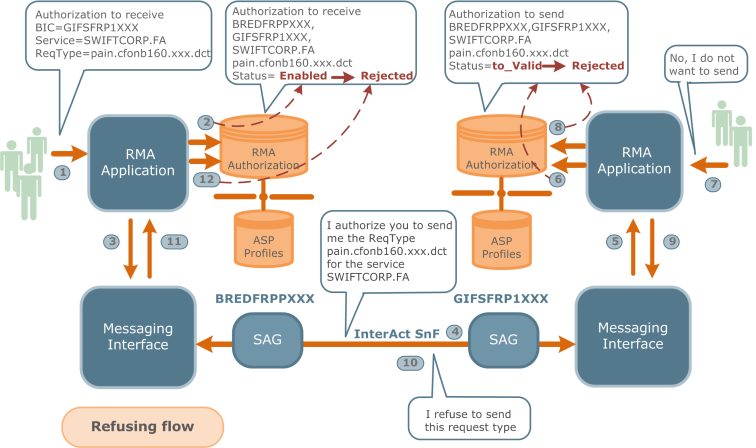
Steps in the authorization flow:
| Step | Description |
|---|---|
| 1 | The receiver creates an authorization to receive. The receiver is the issuer of the authorization |
| 2 | The authorization is stored within the RMA data store with the status "Enabled" |
| 3 | The authorization is submitted to the messaging interface |
| 4 | The authorization is received by the messaging interface of the correspondent that is the sender of the flow to authorize |
| 5 | The authorization to send is transmitted to the RA application |
| 6 | The authorization to send is stored in the RMA data store with the status "To validate" |
| 7 | The user rejects the authorization to send |
| 8 | The authorization to send status is set to "Enabled". It will be taken into account at the filtering time |
| 9 | The rejection is submitted to the messaging interface |
| 10, 11 | The rejection is received by the messaging interface and transmitted to the RMA application of the issuer of the authorization |
| 12 | The status of the authorization is set to "Rejected" in the data store of the issuer of the authorization |
The receiver of an enabled authorization to send (sender of the authorized flow) deletes the authorization.
The issuer of an enabled authorization to receive (receiver of the authorized flow) revokes the authorization.
This diagram shows the state transitions relating to authorization to receive.
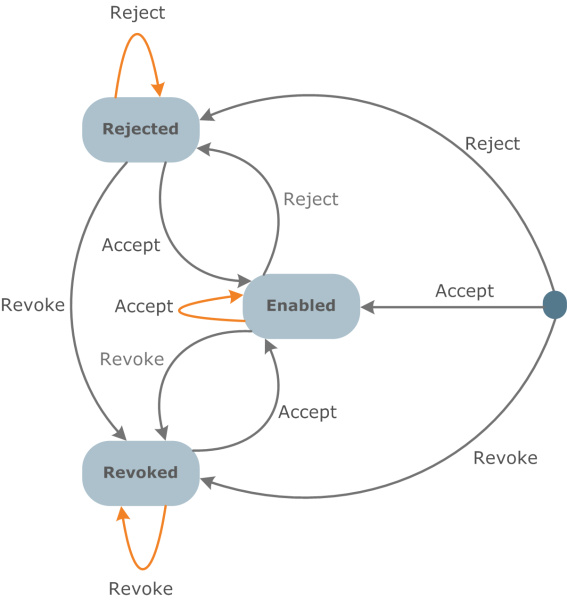
This diagram shows the state transitions relating to authorization to send. Transitions from "Revoked" to "Rejected" and vice versa are not shown.
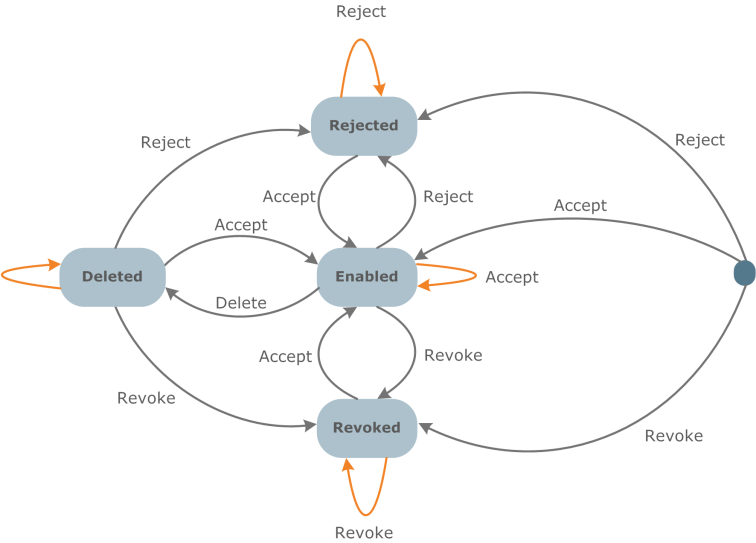
FEX provides an RMA filtering exit that is used in conjunction with Axway Gateway. The exit is used by Gateway to interface itself with the FEX RMA Server to provide RMA capability.
In some cases, Relationship Managers may wish to communicate with their peers within another organization to ask questions or to resolve problems with the authorizations exchanged.
The free-format RmaQuery message can be used to do this. The response to an RmaQuery message is an RmaAnswer message. The peer Relationship Manager sends the RmaAnswer (in response to an RmaQuery) back to the sender of the RmaQuery.
For more information about RMA, refer to the following SWIFT documents:
Checking and importing an RMA distribution file